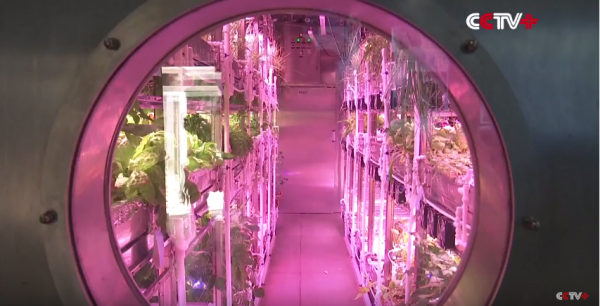By Prei Dy, | May 11, 2017

Two men and two women have volunteered to live in the simulated space cabin for 60 days to study human's needs while on the moon. (YouTube)
China is testing the ability of four future astronauts to remain on the moon for longer periods, as it plans to ramp up its ambitious space program. Four postgraduate students entered a 160-square meter simulated space cabin, called the "Yuegong-1" or "Lunar Palace," on Wednesday.
Like Us on Facebook
The two men and two women reportedly volunteered to live in the cabin for 60 days. They will be relieved by another group of four, who will stay in the cabin for 200 days, before returning for an additional 105 days. This experiment will help scientists to understand what humans will need to stay on the moon "in the medium and long terms," according to state-backed Xinhua News.
"The latest test is vital to the future of China's moon and Mars missions and must be relied upon to guarantee the safety and health of astronauts," Liu Zhiheng from the Chinese Academy of Sciences said.
The volunteers will be sealed in a lab with no input from the outside world. Even their waste will be treated with a bio-fermentation process, while experimental crops and vegetables will be grown with the help of food and waste byproducts.
According to CCTV, the cabin represents the most advanced closed-loop life-support technology in the world so far.
"While it remains unclear exactly how long China's lunar explorers will spend on the surface, the country is already planning for longer stays," Xinhua noted.
The "Lunar Palace" has two plant cultivation modules and a 42-square meter living cabin including four bed cubicles, a common room, a bathroom, a waste-treatment room, and a room to raise live stocks.
It is the first bioregenerative life-support base in China and the third in the world. But chief designer Liu Hong described it as "the first of its kind" as it is the only facility to involve animals, microorganisms, plants, and even humans.
-
Use of Coronavirus Pandemic Drones Raises Privacy Concerns: Drones Spread Fear, Local Officials Say

-
Coronavirus Hampers The Delivery Of Lockheed Martin F-35 Stealth Fighters For 2020

-
Instagram Speeds Up Plans to Add Account Memorialization Feature Due to COVID-19 Deaths

-
NASA: Perseverance Plans to Bring 'Mars Rock' to Earth in 2031

-
600 Dead And 3,000 In The Hospital as Iranians Believed Drinking High-Concentrations of Alcohol Can Cure The Coronavirus

-
600 Dead And 3,000 In The Hospital as Iranians Believed Drinking High-Concentrations of Alcohol Can Cure The Coronavirus

-
COVID-19: Doctors, Nurses Use Virtual Reality to Learn New Skills in Treating Coronavirus Patients














